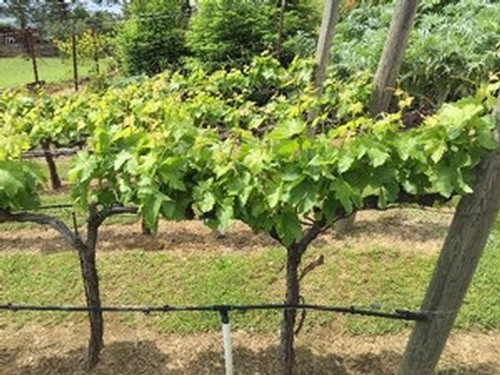Sparkling Wine Grapes
Traditional Grape Varietals Vs. Untraditional for Sparkling Wine

Tempranillo Grape Vines
France set the standard for sparkling wine, establishing the widely-held belief that bubbly should be crafted out of just three stalwart grape varietals — Pinot Noir, Chardonnay and Pinot Meunier. But California in recent years is setting a new scene for sparkling winemaking using untraditional grapes.
The most diverse varietals for sparkling are being made by small producers throughout California, and other regions like New York, Texas, New Mexico, Minnesota and Washington are emerging as converts to this trend. We’re seeing Pinot Gris, Riesling, Gewürztraminer, Muscat and more from many of these states. In fact, we are doing a Muscat ourselves, for the Rack & Riddle Winery brand. These “untraditional” varietals result in wines that are unique, but still quality-wise just as good. Champagne, France is traditionally considered “above” these other regions and wines, but there isn’t really a good reason for it.
We have a limited perception of what sparkling wine should be, because French sparkling wine is what was originally imported to the United States, shaping consumers’ opinions early on. But at the same time that France was becoming renowned for Champagne, bubbly was being made in other countries as well, such as Spain, Portugal and Germany. None of the sparkling wines from those countries are made out of the traditional three varietals. Bubbly can be made anywhere, and out of completely different varietals depending on what grows best in the region.
Here at Rack & Riddle, we’ve made sparkling wine out of Cabernet, Cabernet Franc, Sauvignon Blanc, Tempranillo, Pinotage, Malbec, Syrah and various Italian varietals like Vecchio. If you have a new varietal you’d like to make into bubbly, contact us!
I’ll talk about two of my favorite sparkling wines made out of untraditional grapes. The first is French Colombard, a varietal that a lot of people pooh-pooh but that makes an excellent sparkling wine. The other is what I like to call the “Bordeaux bubbly” — a blend of Cabernet Sauvignon, Sauvignon Blanc and Cabernet Franc. This was a wine we crafted that garnered an award at the California State Fair. What’s interesting about this blend is there’s something different about it that makes it special, but you wouldn’t necessarily identify it wasn’t made out of the traditional three varietals.
I highly encourage winemakers to experiment with new varietals. Whether that’s researching varietals to plant in your region and picking early specifically for sparkling, or utilizing grapes that don’t ripen — don’t let the grapes go to waste, make a sparkling!
There is really no varietal I would say “no” to for sparkling, unless the vineyard exhibits something you might not want in your bubbly. An example might be Sauvignon Blanc. Out of one vineyard it might be really tropical, which is really nice for sparkling, but out of another vineyard it might have a lot of herbaceousness that you don’t want. Some winemakers use Sauvignon Blanc even with that “herbalness,” — they’re willing to go in that direction, it’s just a matter of opinion.
Good luck with experimenting, and remember, don’t limit yourself. As they say — and what seems especially fitting for sparkling — “Reach for the sky and you’ll land among the stars!”
Check out Rack & Riddle’s full-service custom crush programs for both sparkling and still wines.
Contact Rack & Riddle anytime to discuss your needs: 707-433-8400
